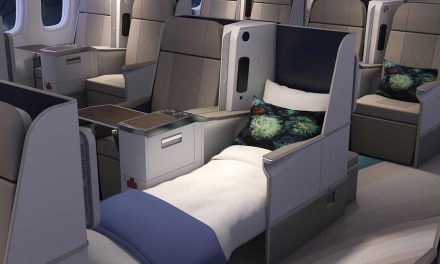Dassault Aviation is moving into the world of MRO. With the acquisition of the maintenance operations of TAG Aviation, ExecuJet and, recently, the Lugano and Geneva centers of RUAG, the manufacturer with the famous clover acquires not only a strong strategy to consolidate a changing sector, but also new technologies to revolutionize this sector.
Meeting with Jean Kayanakis, Senior Vice President, Worldwide Falcon Customer Service & Service Center Network
Why has Dassault Aviation decided to significantly develop its maintenance activities with the acquisition of TAG Aviation and ExecuJet maintenance operations as well as, more recently, the Geneva and Lugano RUAG centers?
The market is expecting greater involvement of manufacturers in MRO (Maintenance Repair and Overhaul) activities. It is important for us to better control the experience of our customers but also to limit our dependence on the market. The competition between the manufacturers is more and more lively. Differentiation continues to be done first through the quality and positioning of the products. But the appreciation of customer service has however risen over the years among the first criteria of choice of the different users, owners or operators.
We do not miss arguments on this point. One of the most important areas of development for us is the access to the Asian market, where Falcon’s fleet is not yet as important compared to United States or Europe historical markets. In fact, the acquisition of the maintenance activities of ExecuJet allows us to strengthen solidly our positioning in the region, and more particularly in Malaysia and Oceania as well as of course in Africa. It is important to note that ExecuJet Malaysia was not yet approved to support the Falcon range. The acquisition of this site will therefore allow us to authorize new technicians to operate on our aircraft and to reposition our service offer in the region.
The acquisition of the TAG maintenance operations, and more recently of the Lugano and Geneva RUAG sites, aims to better control our capabilities in Europe. Even though we have our own Dassault Falcon Service (DFS) entities at Paris-Le Bourget and Bordeaux-Mérignac, it appeared that we missed a significant part of this market. Even if our ambition is not to be “exclusive” it seemed essential, in the medium term, to better control the support organisation by expanding the maintenance activity.
The choice was not made randomly. We naturally decided to acquire companies with which we already had solid experience and with which we share common values.
Is this an answer to General Dynamics’ acquisition of Hawker Pacific a year ago?
Very clearly no. However, we must recognize that Gulfstream has a strategy of integration of its service much more important than we have had so far. But so is Bombardier. This is in all cases a new era that responds to a change in competition between the different manufacturers.
It was important for us to make our own choices and to be able to play an important role in this sector, not only to get closer to our operators and owners needs but also to better position the current generation of Falcon and of course to prepare the arrival the future models, starting with the 6X.
What will happen to owners operating different type of aircraft?
Of course, we will continue to work on other manufacturers’ aircraft based on market developments and on the confidence we will gain from these customers. Our primary goal is to develop Falcon’s maintenance capacity and offer. Hence the need to establish a perfect coordination between our different entities to balance the workload and to homogenize our services.
Will you change the name of the acquired brands and when?
As Eric Trappier, Dassault Aviation president and CEO Aviation pointed out, we will continue to operate the newly acquired centers under their current brand names, at least initially. Nothing has been decided for the time being to group them under a single brand.
Asia, Africa and Europe. Do you also have some projects for South and North America?
Once again, as Eric Trappier, said during the Ebace press conference, we will continue to evaluate all the opportunities that may arise in other parts of the world, such as South and North America. But that does not mean that we will take action tomorrow! The goal is not to capture 90% of the global maintenance market but first to expand our own customer experience to strengthen the positioning of the Falcon brand.
How has the competition reacted to the deployment of your new strategy?
Competition is surely an issue, and it remains attentive to what we are doing. We remain particularly transparent about our strategy and we continue to discuss with all the actors. But you will understand that we obviously want to first highlight the Falcon range, especially in geographic areas where the competition is already present.
If the new strategy that you are putting in place seems essential to the development of the range, it also appears that the technological stakes related to maintenance, and more particularly to predictive maintenance, are important. What is your approach on this issue and what are your goals?
This is indeed an important issue. It must nevertheless be placed in the particular context of business aviation. We do not have to deal with users who operate large aircraft fleets, so forecasting is one thing, but you have to know what you’re doing of the obtained data and then who use them. In the airlines, they rarely hesitate to remove equipment in advance to carry out verifications which is not necessary in business aviation where the stakes are different. Our thinking is much more focussed on fault diagnosis, because we realized that on recent Falcon 7X and 8X aircraft, the analysis of failures and of some intermittent messages on different systems, often made it possible to understand the failure scenario. The challenge is to be able to perform this type of analysis upstream and recognize the signature of a future failure, to anticipate the maintenance actions to be conducted. But beyond troubleshooting, we also have a more “futuristic” approach. Once the failure has been identified, we will have to “apply” it on aircraft that have not yet experienced this type of defect. The main objective of this anticipation is to possibly avoid the cancellation of a flight.
Our second axis of reflection in terms of predictive maintenance is related to the large amount of data of the fleet in service. It sometimes appears that among the huge amount of information available, some are not sufficiently cut and used in particular to prevent certain breakdowns.
In fact, new methods of analysis and processing could enable us to better identify upstream recurring failures on certain serial numbers. These reflections are certainly futuristic, but it is undeniably the axes on which we focus today all our attention together with the development of new tools.
Will this approach allow you to work on all equipment, except the engines?
Indeed because the engine manufacturers already have their own monitoring systems by recording a large number of data that they use elsewhere.
In fact, the analyzes will mainly focus on the other aircraft equipments and systems such as avionics, first on Falcon 7X and 8X and then on the Falcon 6X. The ultimate goal is to avoid breakdowns that ground the aircraft and thus further improve the operational availability of our aircraft. The added value of such an approach is to be able to put the aircraft back into service in the shortest possible time.
Will next-generation predictive maintenance be present on the Falcon 6X?
There will be a significant evolution on the maintenance side with the arrival of 6X. This is one of the priorities on which our engineers work with the evolution of data processing which allows us to identify as closely as possible the nature of the failures but also to define with a high reliability rate the parts to be changed.
This is an important aspect in particular to prepare the interventions of our GoTeam or FalconResponse field teams and provide them in advance with the right tools and the necessary spare parts.
During the presentation to the press, Dassault unveiled new systems of maintenance controls including the 3D scanner. Can you tell us a little more?
Indeed we have presented two new tools that will soon improve some maintenance operations on the airframe of our aircraft. Regarding the HandyScan3D scanner developed by the Canadian company Creaform, it is a simple optical process to implement and that can detect, with a high definition, the structural defects on an aircraft.
The scanner is used especially in cases of corrosion or deformation investigation. The area to be studied is previously marked with pellets which serve as positioning targets. Once scanned, these targets make possible to define the reference frame and to map the surface of an element. The encrypted data is computerized in real time and analyzed by a post-processing software before being communicated to the design office that will validate or not the conformity of the part.
The time saved in troubleshooting is greatly reduced with this system. At the same time, it makes reliable the checks that were previously performed visually with shims and that could possibly leave a certain margin of error. This system has been in operation for two years, but we have only really implemented it in maintenance procedures recently, after the system has fully matured.
You also mention the use of drones. When did you set up this system?
For now, the system is only used for maintenance on the Rafale. For our Falcon aircraft it’s been a few months since we evaluate the solution to visualize defects and characterize them thanks to artificial intelligence. This system developed in collaboration with the start-up Donecle, will allow to replace the detailed visual inspections and to detect some defects during major inspections. As it is easy to use, it will also ensure a visualization of the upper parts of the aircraft (like top of the fuselage, or upper fin) especially at the end of the paint job. We are not quite ready yet, but there are some interesting advances that could allow us to consider the generalization of these tools in the near future on the Falcon range within our Dassault Falcon Service stations.









